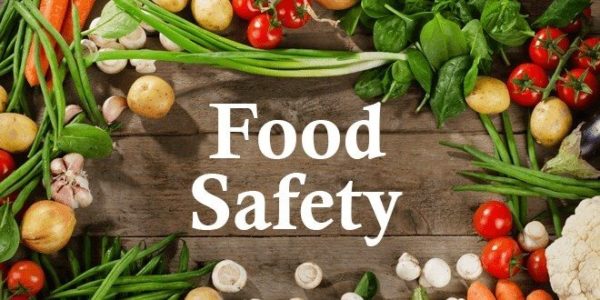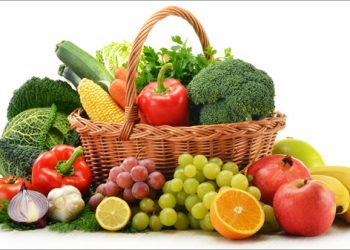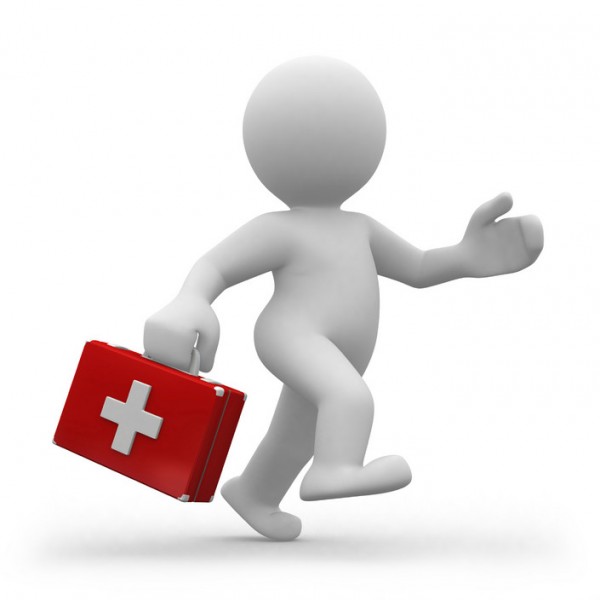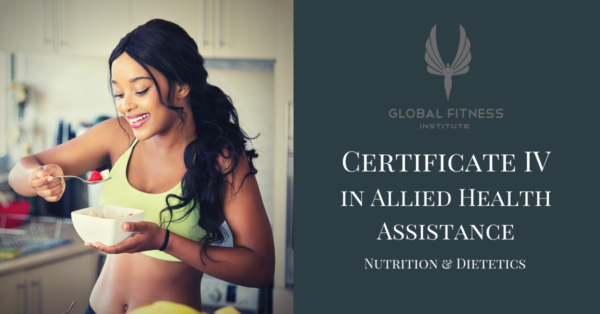Food Safety – How safe is your food ?
Handling food properly and safely is essential to preventing food borne illness. This page sets out to offer you the highest quality information on how to handle food safely, making it safe to eat, and stopping it from spoiling.
In this article you will learn about:
- Preparing food in a safe manner.
- Serving food in a safe manner
- Stopping the spread of bacteria through cross contamination
- Routines to follow and habits to avoid.
- Presenting food in a hygienic and appetising way.
The importance of following proper safe food handling procedures
From the time the food is delivered to the minute it is served, food safety should be a top priority.
The handling of food can take place during;
- Cooking
- Cooling
- Hot holding
- Preparation
- Purchase
- Receipt
- Re-heating
- Serving
- Storage
General safe food handling tips:
- Do not wipe your hands on your clothing as this can easily transfer microbes and bacteria.
- Prepare precooked frozen foods exactly as the directions/instructions on the packaging state.
- Have foods ready not any longer than necessary before serving time.
- Prepare and cook only as much food as you intend to use.
- Wash and sanitize flatware or other utensils, which fall to the floor.
- Do not taste foods with any utensil used either to mix or stir food, if other people are going to eat it too.
- Pick up and hold all tableware by the handles.
Hand washing
Clean hands are essential in a kitchen environment. It’s very easy for bacteria to spread from the food we touch to door handles, plates, cutlery and so on. Hand washing is one of the best ways to prevent the spread of germs between people.
When washing your hands try to;
- Use a soap dispenser rather than a bar of soap.
- Wash in a sink that has hot and cold running water.
- Wash in a sink that is separate from one that is used to wash foodstuff and utensils.
- Dry your hands with paper towels.
Wash your hands after:
- Using the toilet
- Handling raw and cooked foods
- Eating
- Drinking
- Smoking
- Coughing, sneezing or blowing your nose
- Touching your hair
- Playing with pets or handling animals
- Handling refuse or waste materials
- Handling cleaning chemicals
Procedure to washing your hands properly
- Wet your hands
- Rub your hands and wrists with soap
- Lather the soap for 20 seconds
- Rinse thoroughly
- Dry with paper towels or a hot air dryer (a communal towel or tea towel is a major spreader of bacteria)
Personal hygiene
Here are some basic tips to follow;
- Keep fingers away from your face, mouth, hair, skin and other parts of the body.
- Don’t brush or comb your hair when you are near food.
- Wash your hands frequently.
- Never smoke in food areas.
- Do not handle food with bare hands – use gloves instead.
- Do not eat or chew gum in food handling areas.
- Don’t cough, sneeze, spit or smoke near food and avoid touching your nose, teeth, ears and hair, or scratching when handling food.
- Do not use fingers to sample food. Always use a clean spoon.
Food preparation surfaces
Make sure that work surfaces and equipment are visually clean, this goes a long way towards ensuring that they are free from high levels of harmful bacteria.
Clean as you go
Train yourself to ‘clean as you go’, for instance cleaning up any spillages immediately.
Cans
Before opening a can of food always clean the top of it first. Remember that once the can is opened, any food which is not used immediately must be quickly stored in food grade containers and placed in a refrigerator.
Can openers
Food can be left on any can opener after it has been used, it’s therefore advisable to clean it after each use.
Plates
Never place cooked food on a unwashed plate that had previously held raw meat, poultry, or seafood.
Food labels
Take the time to read product labels very carefully, and look for advisory statements like ‘may contain ingredient X’.
Meat and poultry
Keep meat and poultry in its packaging until just before using.
Towels and sponges
- Replace and wash dish towels and sponges often to prevent the spread of harmful bacteria throughout the kitchen.
- Do not use damp cloths when lifting hot items of equipment.
Uncovered food
Try not to leave food unattended or uncovered for long periods.
Cutting boards
Use separate cutting boards, dishes, utensils and cooking equipment for vegetables, raw meat and cooked meats.
FOOD STORAGE
General tips for storing food
- Foods should be stored off the floor.
- Keep cupboards and food storage areas clean, cool and dry.
- Store food in clean, appropriate containers.
- Storage contents should be used up completely before refilling, avoid ‘topping up’.
- Dried foods should be stored in washable airtight containers (this helps to prevent moisture and heat from damaging them).
Storing raw meat
- Keep packages of raw meat in separate plastic bags from everything else, this helps to prevent meat juices from leaking onto other foods.
- Keep raw foods cold.
- In a refrigerator, stock raw foods below cooked foods.
Perishable foods
Refrigerate these within one to two hours, especially in warm weather.
REFRIGERATING FOOD
Refrigerator temperature
Its advisable to keep your fridge as cold as possible without it freezing food like milk or vegetables. Around 4 degrees is optimal.
Tips on storing food in a fridge
- Dry foods should be kept at the top.
- Check refrigerator and freezer temperatures regularly.
- Consider double-wrap raw meats as this helps to stop raw juices dripping from it.
- Check the contents of your fridge every couple of days and dispose of foodstuff that is past its use-by or best before date.
- Clean out the fridge regularly with hot water and disinfectants etc.
- Perishable foods and foods that have to be kept cold should be stored in the coldest part of the fridge.
- Raw food should always be on the lowest shelf of the fridge.
Freezing meat
To maintain the highest quality of meat you should keep meat and poultry in its original package, and then wrap the package again with foil or a freezer suitable plastic wrap.
THAWING FOOD
Refrigerator thawing
The refrigerator allows slow and safe thawing. This is the easiest method for defrosting frozen food, simply stick it in the fridge and wait until it’s thawed. This method is best used for overnight thawing.
The food should be placed in a drip-proof container and kept at the bottom of the refrigerator, this stops juices from falling onto other foodstuff and prevents cross contamination. Refrigerator thawing is ideal for meats, dairy products, breads and baked goods, pastas, rice, beans and fruit in the fridge.
Cold water thawing
This method is faster than refrigerator thawing, and is carried out by placing the food in a leak-proof package or plastic bag. This bag is then submerged in cold tap water. To ensure that the temperature of the water doesn’t get too warm (leading to bacteria growth), the water should be changed every 30 minutes during the entire thawing process.
This method is much faster than refrigerator thawing, and is suitable for small portions of meat and poultry. However due to the need to change the water it requires a lot more attention that refrigerator thawing.
- Do Not Use hot water to thaw, as that can cause the outer layer of the food to heat up to a temperature where harmful bacteria can begin to grow.
- Once the food is thawed completely, it should be cooked immediately.
Microwave thawing
Only thaw food in a microwave if you plan to cook it immediately after wards. This is because during microwaving some areas of the food may become warm and begin to cook, this can lead to bacteria can grow in the outer layers of the food before the inside fully thaws.
The microwave is the quickest method of defrosting food. One disadvantage is that it could create ‘hot spots’ where some of the food has been heated unevenly, another is that it can dry out foods.
Cooking food after thawing
As a rule it is advisable to cook food immediately after it has been thawed.
- Refrigerate all leftovers promptly in uncovered, shallow containers so they cool quickly.
- Always use clean containers to store the leftovers in.
- Wrap leftovers in leak-proof plastic bags to prevent cross-contamination.
- Keep different types of leftovers separate from each other, avoid mixing them.
- Eat refrigerated leftovers within 2 to 3 days, or freeze them for later use.
- Date leftovers so that you can identify the contents, dating also help to ensure they are not stored for too long.
- When in doubt about leftovers, throw them out.
Do not
- Reheat leftovers more than once.
- Use cooked food that has been left out at room temperature for more than two hours.
Check Food labels
Food packaging labels provide valuable information about when to use the food and how to store it. By reading them and following them you can reduce the instances of food poisoning or spoilage.
Food poisoning (people most at risk)
Although food borne bacteria can strike anyone and anywhere, some people are at a higher risk of getting infections. These groups include pregnant women, young children, older adults and people with weakened immune systems. All of these groups should pay extra attention to preparing, handling or eating food.
FROZEN FOODS
Freezers
- Aim to keep the temperature of a freezer between minus 18 and minus 22 degrees centigrade.
- Do not allow ice to build up inside freezers.
- Keep freezers away from sources of heat and direct sunlight.
Frozen foods
- Frozen foods should not, have developed large ice crystals, be discoloured or dried-out.
- Use the star-marking panel on your freezer door to find out how long you can freeze foods for.
- Make sure that any frozen food you intend to cook is fully defrosted before you use it.
- When freezing food make sure that the wrapping is as tight as possible, this helps to exclude air which in turn prevents dehydration and other problems such as ‘freezer burn’.
FOOD POISONING
Food poisoning symptoms
Most people only experience mild symptoms, with only a small proportion needing medical attention. Symptoms can appear any time from several minutes to several weeks after eating contaminated food.
The length of time it takes for the symptoms to appear really depends on the type of bacteria as well as the immune system of the infected person and the amount of organism the person ate. Typical symptoms can include;
- Diarrhoea
- Fever
- Headache
- Nausea
- Stomach cramps
- Vomiting
In more serious cases, food poisoning victims may have nervous system problems like paralysis, double vision or trouble swallowing or breathing.
Food poisoning can be caused by
- Eating undercooked or contaminated food which contains toxin producing bacteria.
- Harmful germs such as salmonella, campylobacter, E. coli and listeria.
- Preparing food to far in advance and then not storing it at the correct room temperature, i.e. not keeping it refrigerated.
- Cooling food too slowly prior to refrigeration.
- Not re-heating food to high enough temperatures to destroy food poisoning bacteria.
- The use of cooked food contaminated with food poisoning bacteria.
- Not thawing frozen meat or poultry for sufficient length of time.
- Cross-contaminating raw food and cooked food.
- Storing food below 63 C.
- Infected food handlers who have poor personal hygiene.
- Eating leftovers.
Types of food poisoning
- Microbiological
- Bacterial Infection
- Bacterial Intoxication
- Parasitical infection
- Viruses
- Chemical food poisoning – occurs when poisons are accidentally added to food.
- Allergic reactions – an over reaction of the immune system to unwanted substances.
How long can food poisoning last?
Most bacterial food poisonings last for a few days and clear up on their own. Some people may need antibiotics to help their immune system fight and eventually destroy the bacteria.
Testing potentially contaminated food
You should never just rely on your nose, eyes or taste buds to judge if food is safe to eat. You cannot 100 per cent tell if food is contaminated by its look, smell or taste.
- Do not taste food that looks or smells strange to check if you can still use it, instead just discard it.
Food poisoning in the summer
It’s a fact that food poisoning cases double over the summer. This is because warm weather enables the bacteria to multiply faster, and also because people change their eating habits in the summer months, they tend to eat more cold food and have more buffets or barbecues where food is left out for long periods.
FOOD POISONING BACTERIA
You can’t see, taste, feel or smell bacteria, making it difficult to detect on any food products, kitchen surfaces or cooking utensils. It can contaminate food without making its presence known. Bacteria are very small living things that can be found everywhere, in water, soil, animals, food and even people. Everyone has bacteria on their bodies.
What are bacteria ?
Bacteria are single celled organisms that reproduce through multiplication, and which can grow and divide every 20 minutes. It reproduces by dividing itself, so one bacterium will become two and then two will become four and so on. In ideal conditions one can become several million in just 8 hours.
Avoid food poisoning bacteria by;
- Not eating high-risk foods like raw or lightly cooked eggs, undercooked meat or poultry, and unpasteurized milk.
- Always cooking food thoroughly.
- Not handling ready-to-eat foods with your bare hands.
- Washing and drying your hands properly after; touching raw foods, going to the toilet, touching bins, sneezing, coughing, washing dishes, touching pets etc. (Remember that even healthy people can spread bacteria by simply touching food with their hands).
- Keeping worktops, chopping boards and utensils clean.
- Keeping foods at the correct hot or cold temperatures.
- Cleaning mealtime surfaces.
- Using separate cutting boards for poultry, meat and vegetables.
- Examining food closely whilst preparing it and looking for telltale signs of contamination.
- Not handling food if you are ill, or have open sores or cuts etc.
How does bacteria grow ?
The bacteria that causes food poisoning needs warmth and moisture to grow. Pathogenic bacteria grows best when there is a rich food supply of high protein food, and will multiply rapidly between 4°C and 60°C. This is why it’s vital to keep food out of this “danger zone,” by keeping cold food cold and hot food hot.
Bacteria multiply with;
- Warmth
- Moisture
- Food
- Time
Bacteria spreads through;
- Cross contamination
- Improperly cooked food
- Poor food handler hygiene
- Pests infecting food
Harmful bacteria
The bacteria that specifically causes disease and food-borne illnesses are called ‘pathogens.’ There are over two hundred different types of bacteria, parasites and viruses that can cause food borne diseases. However it is estimated that the vast majority of food poisoning (over 90 per cent) is caused by just a handful of bacteria (listed below);
- Staphylococcus aureus
- Salmonella
- Clostridium perfringens
- Campylobacter
- Listeria monocytogenes
- Vibrio parahaemolyticus
- Bacillus cereus
- Entero-pathogenic Escherichia coli.
In extreme cases when certain pathogens enter the food supply they can cause death, especially in babies, older people, and those with chronic diseases or weakened immune systems. Food-borne illness that has been caused by bacteria can manifest itself as flu-like symptoms such as fever, nausea, abdominal cramps, vomiting or diarrhoea.
- Many cases of food poisoning by bacteria go undiagnosed or unreported.
After eating contaminated food a person will not normally become ill straight away. This is because most bacteria needs an incubation period in which to multiply in a person’s intestine. The delay before when symptoms start can be anything from a few hours to a few days, and depends on the type of bacteria and a person’s general health.
Bacteria can be found on:
- Appliances
- Kitchen utensils
- Clothes
- Equipment
- Food
- Hands
Salmonella
This name is used to describe a group of bacteria that is one of the most common causes of food poisoning in the population. Salmonella is usually transmitted through contaminated animal faeces. It’s therefore vital that you wash your hands after coming into contact with any animals, their food, or their habitat.
It can cause an infection called Salmonellosis, and is usually found in;
- Poultry
- Eggs
- Unpasteurised milk
- Meat
- Juice
- Cheese
- Raw fruits
- Vegetables
- Spices
- Nuts
Typical symptoms can last for between 4 – 7 days and can include stomach pain, diarrhoea, nausea, chills, fever, and headaches.
KITCHEN HYGIENE
Kitchen hygiene tips
- Always clean surfaces first with detergent to remove any grease or dirt, then apply disinfectant to kill any remaining germs.
- Allow time at the end of the working day to thoroughly clean the kitchen so it’s ready for the next day.
- Surfaces and equipment that come into contact with food are the most important, but don’t forget to regularly clean walls, floors and storage areas.
- Do not just wipe surfaces and utensils with a damp cloth. Remember that towels and cloths can contain a lot of germs themselves, and you could end up simply spreading them around.
- Keep kitchens free of clutter.
- Do not allow pets into the kitchen.
- Keep the floor dry by quickly mopping up any spilled liquids.
- Cleaning substances should leave no toxic or tainting residue.
First Aid for suspected food poisoning
If the condition is mild, drink clear fluids, starting with small sips and gradually drinking more. If vomiting and diarrhea last more than 24 hours, drink an oral rehydration solution.
If you have a mild case of food poisoning, it may respond well to rest and fever-reducing medications.
If you have a more severe case, you may need to be admitted to the hospital for intravenous fluid hydration. If you have severe bacterial food poisoning, your doctor may prescribe an antibiotic.
Want to learn more about nutrition and food safety ?
Food Safety is one of the key topics in the Certificate IV in Nutrition & Dietetics








